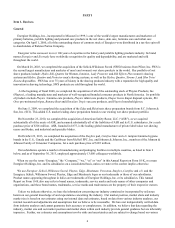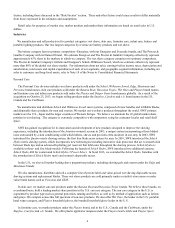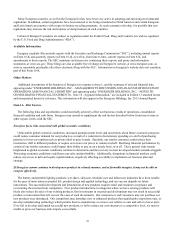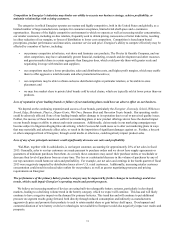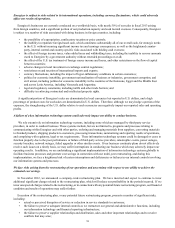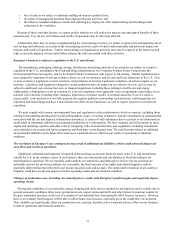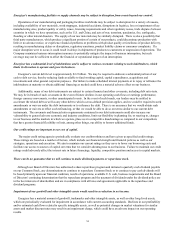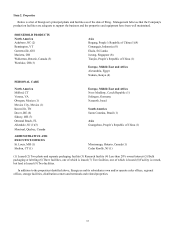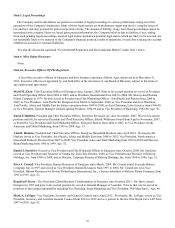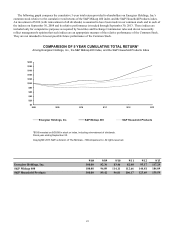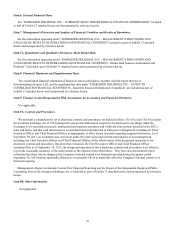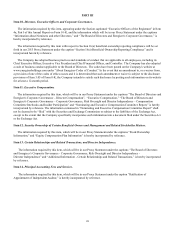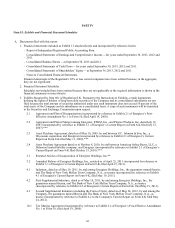Energizer 2013 Annual Report Download - page 24
Download and view the complete annual report
Please find page 24 of the 2013 Energizer annual report below. You can navigate through the pages in the report by either clicking on the pages listed below, or by using the keyword search tool below to find specific information within the annual report.Energizer's manufacturing facilities or supply channels may be subject to disruption from events beyond our control.
Operations of our manufacturing and packaging facilities worldwide may be subject to disruption for a variety of reasons,
including availability of raw materials, work stoppages, industrial accidents, disruptions in logistics, loss or impairment of key
manufacturing sites, product quality or safety issues, licensing requirements and other regulatory issues, trade disputes between
countries in which we have operations, such as the U.S. and China, and acts of war, terrorism, pandemics, fire, earthquake,
flooding or other natural disasters. The supply of our raw materials may be similarly disrupted. There is also a possibility that
third party manufacturers, which produce a significant portion of certain of our products, could discontinue production with
little or no advance notice, or experience financial problems or problems with product quality or timeliness of product delivery,
resulting in manufacturing delays or disruptions, regulatory sanctions, product liability claims or consumer complaints. If a
major disruption were to occur, it could result in delays in shipments of products to customers or suspension of operations. The
Company maintains business interruption insurance to potentially mitigate the impact of business interruption, but such
coverage may not be sufficient to offset the financial or reputational impact of an interruption.
Energizer has a substantial level of indebtedness and is subject to various covenants relating to such indebtedness, which
limits its discretion to operate and grow its business.
Energizer's current debt level is approximately $2.2 billion. We may be required to dedicate a substantial portion of our
cash to debt service, thereby reducing funds available to fund working capital, capital expenditures, acquisitions and
investments and other general corporate purposes. Our failure to make scheduled interest payments or to repay or refinance the
indebtedness at maturity or obtain additional financing as needed could have a material adverse effect on our business.
Additionally, many of our debt instruments are subject to certain financial and other covenants, including debt ratio tests.
We may be in breach of such covenants in the event of future declines in our operating cash flows or earnings performance,
foreign currency movements, or other unanticipated events. In the event of such breach, our lenders may be entitled to
accelerate the related debt as well as any other debt to which a cross-default provision applies, and we could be required to seek
amendments or waivers under the debt instruments or to refinance the debt. There is no assurance that we would obtain such
amendments or waivers or effect such refinancing, or that we would be able to do so on terms similar to our current debt
instruments. The covenants and financial ratio requirements contained in our debt instruments could also increase our
vulnerability to general adverse economic and industry conditions, limit our flexibility in planning for, or reacting to, changes
in our business and the markets in which we operate, place us at a competitive disadvantage as compared to our competitors
that have greater financial flexibility or limit, among other things, our ability to borrow additional funds.
Our credit ratings are important to our cost of capital.
The major credit rating agencies periodically evaluate our creditworthiness and have given us specified credit ratings.
These ratings are based on a number of factors, which include our financial strength and financial policies as well as our
strategies, operations and execution. We aim to maintain our current ratings as they serve to lower our borrowing costs and
facilitate our access to sources of capital on terms that we consider advantageous to our business. Failure to maintain our credit
ratings could adversely affect the interest rate in future financings, liquidity, competitive position and access to capital markets.
There can be no guarantee that we will continue to make dividend payments or repurchase stock.
Although our Board of Directors has authorized a share repurchase program and initiated a quarterly cash dividend payable
on our Common Stock, any determinations to continue to repurchase Common Stock or to continue to pay cash dividends will
be based primarily upon our financial condition, results of operations, available U.S. cash, business requirements and the Board
of Directors' continuing determination that the repurchase program and the payment of dividends under the dividend policy are
in the best interests of shareholders and are in compliance with all laws and agreements applicable to the repurchase and
dividend programs.
Impairment of our goodwill and other intangible assets would result in a reduction in net income.
Energizer has a material amount of goodwill, trademarks and other intangible assets, as well as other long-lived assets,
which are periodically evaluated for impairment in accordance with current accounting standards. Declines in our profitability
and/or estimated cash flows related to specific intangible assets, as well as potential changes in market valuations for similar
assets and market discount rates may result in an impairment charge, which could have an adverse impact on our operating
results.
14



